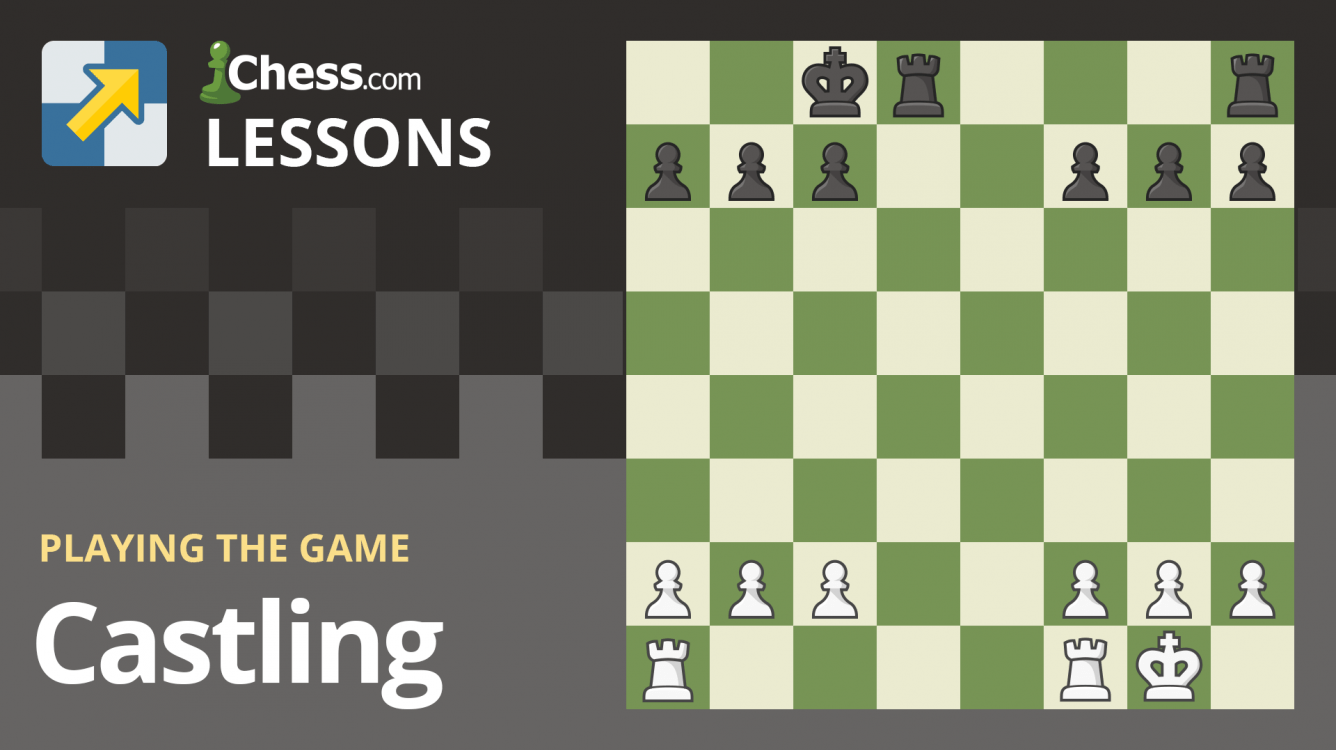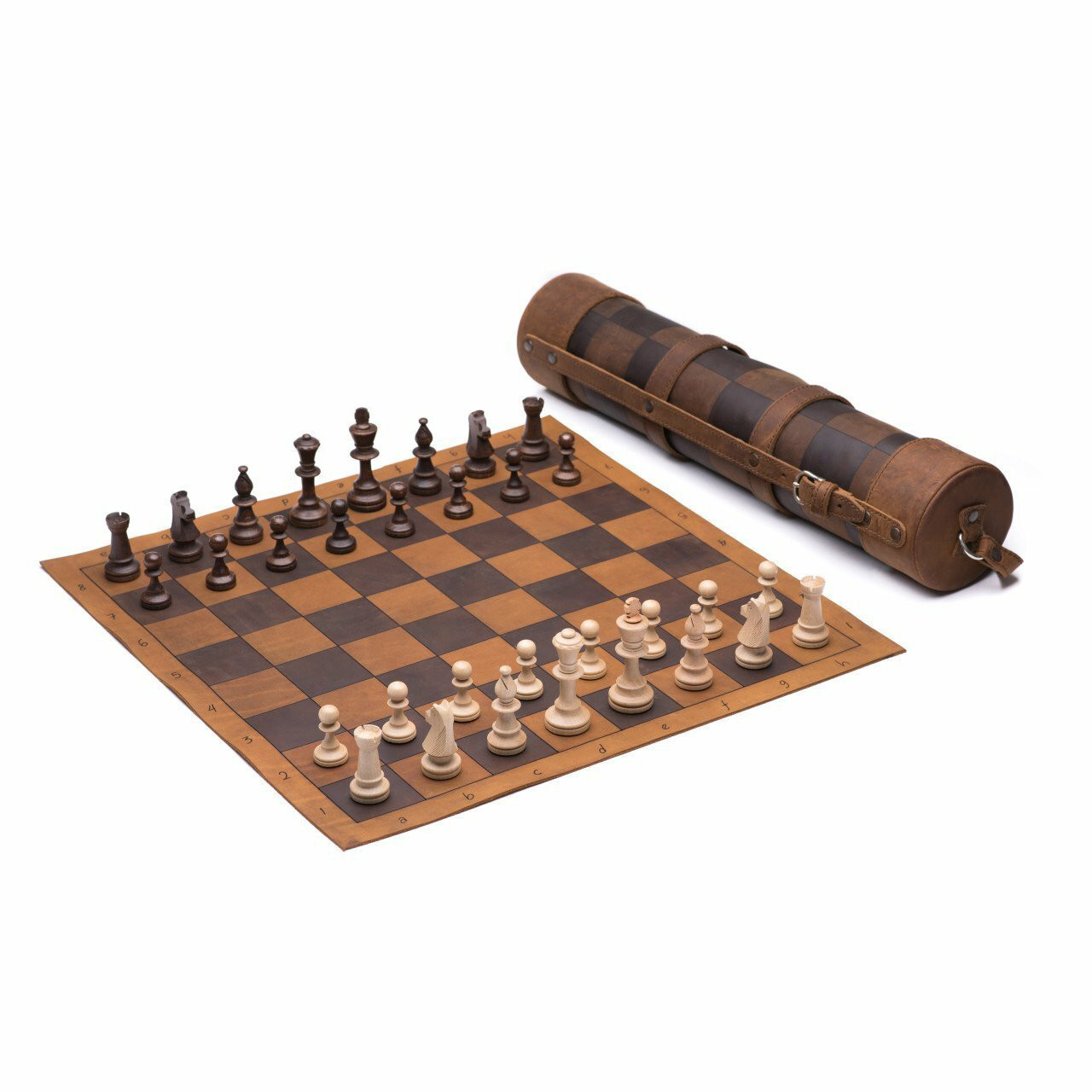Castling is an important move in chess that can protect your king. It’s a special move involving both the king and a rook.
Learning how to castle in chess can seem tricky at first, but it’s essential for every beginner. By mastering this move, you can safeguard your king and connect your rooks. In this guide, we’ll break down the steps to castle, making it easy to understand and execute.
You’ll learn when to castle and why it’s a strategic move. Whether you’re new to chess or just need a refresher, this step-by-step tutorial will help you grasp the basics of castling in no time. Let’s dive in and make your chess game stronger!

Credit: www.youtube.com
Introduction To Castling
Castling in chess is a special move for protecting the king and connecting the rooks. Learn how to castle step by step and improve your chess skills easily. Follow these simple instructions to understand this essential chess strategy.
Castling is a special move in chess. It involves your king and one of your rooks. This move can be tricky for beginners. But it’s essential to understand. It can protect your king and develop your rook. Let’s break it down step by step. We’ll start with the basics. Then we’ll explore its importance. By the end, you’ll know how to castle confidently.What Is Castling?
Castling is the only move where you move two pieces at once. The king moves two squares towards a rook. The rook jumps over the king to the next square. There are two types of castling. Kingside castling and queenside castling. Kingside is shorter and involves the rook on the king’s side. Queenside is longer and involves the rook on the queen’s side. Castling can only happen if certain conditions are met. Neither the king nor the rook involved can have moved before. No pieces can be between the king and the rook. The king cannot be in check. The squares the king moves across must be safe.Importance Of Castling
Castling serves two main purposes. It helps protect your king. And it helps develop your rook. By castling, you move your king to a safer spot. Often, the king ends up behind a wall of pawns. This makes it harder for your opponent to attack. Castling also brings your rook into the game. Rooks are powerful pieces. They work best when they are connected and active. Castling helps achieve this. Understanding castling is vital for chess strategy. It can improve your position on the board. It can also give you a tactical edge. So, practice castling in your games. It will make you a stronger player. “`
Credit: www.chessbazaar.com
Castling Requirements
Castling is a unique chess move that involves the king and a rook. It’s the only move that allows you to move two pieces simultaneously. To perform castling, certain conditions must be met. Here’s a step-by-step guide to understanding these requirements.
King And Rook Positions
Before you can castle, the king and the rook must be in their original positions. This means:
- The king should start on its initial square, e1 for white or e8 for black.
- The rook should start on its initial squares, a1 or h1 for white, a8 or h8 for black.
Unmoved Pieces
Both the king and rook involved in castling must not have moved previously in the game. If either piece has moved, castling is not allowed. This means:
- The king must not have moved from its starting square.
- The rook you plan to castle with must also not have moved.
Safe Squares
All the squares between the king and the rook must be safe and unoccupied:
- No pieces should be between the king and the rook.
- The squares the king moves across should not be under attack.
- The final square the king moves to must also be safe.
This means:
- The king cannot castle if it is in check.
- The squares the king moves through cannot be attacked.
- The square the king lands on cannot be under attack.
Following these rules ensures a successful castling move, improving your king’s safety and connecting your rooks.
Types Of Castling
Castling is a special move in chess. It helps protect your king and develop your rook. There are two types of castling: Kingside and Queenside. Each type has its own rules and benefits.
Kingside Castling
In Kingside castling, the king moves two squares towards the rook. The rook jumps over the king and lands next to it. This move is also called short castling. It gets its name because the rook moves a shorter distance.
Queenside Castling
Queenside castling is similar but happens on the queen’s side. The king moves two squares towards the queenside rook. The rook jumps over the king to land next to it. This move is also known as long castling. It involves the rook moving a longer distance.
Step-by-step Guide To Castling
Castling is a crucial move in chess. It helps in protecting your king while connecting your rooks. This step-by-step guide will help beginners understand how to castle. Follow these simple steps to master this move.
Preparing The Board
Before castling, ensure the pieces are in their starting positions. The king and the chosen rook must not have moved. Also, there should be no pieces between the king and the rook.
Check that the king is not in check. The squares the king moves through must be free from attack. This step ensures the king’s safety during castling.
Executing The Move
Move the king two squares towards the chosen rook. Place the rook next to the king, on the opposite side. This move completes the castling process.
Remember, you can castle on either the king’s side or the queen’s side. King-side castling involves the rook on the right. Queen-side castling involves the rook on the left.
Practice this move to improve your chess strategy. Castling can be a game-changer in protecting your king and preparing for future moves.
Common Mistakes
Castling is a special move in chess that can enhance your defense. Yet, many beginners make mistakes while attempting this move. Understanding these common errors can help you avoid them and improve your game.
Illegal Moves
One common mistake is making illegal moves while castling. Both the king and the rook must not have moved before castling. Also, the squares between them must be empty. The king must not move through or into check. Violating these rules makes the castling attempt illegal.
Overlooking Threats
Another frequent error is overlooking threats while castling. Always check the board for potential threats. Your king’s destination square should be safe. Also, ensure the rook’s final position is not under attack. Ignoring these threats can lead to losing key pieces or even the game.

Credit: www.chess.com
Strategic Benefits
Casting in chess is a powerful move. It offers both offensive and defensive advantages. Let’s dive into the strategic benefits of castling.
King Safety
Castling helps protect your king. By moving the king two squares towards the rook, you tuck it away safely. This move usually places the king behind a wall of pawns. This makes it harder for opponents to attack directly.
Here’s how castling enhances king safety:
- Sideways Movement: The king moves closer to the edge of the board, reducing attack angles.
- Pawn Shield: The pawns in front create a strong defense line.
King safety is crucial in the middle game. A secure king allows you to focus on attacking.
Rook Activation
Castling also activates your rook. The rook moves closer to the center of the board. This increases its range and influence.
Benefits of activating the rook:
- Central Control: A central rook can control key squares.
- Connecting Rooks: Both rooks can work together, doubling their power.
Rooks are powerful in open positions. They can control files and ranks, putting pressure on your opponent.
In summary, castling offers dual benefits. It secures your king and activates your rook. This move is vital for a strong, balanced position.
Advanced Considerations
When it comes to castling in chess, beginners often focus on the basic rules. Yet, advanced considerations can significantly impact your strategy. Understanding these nuances can give you an edge over your opponent. Let’s delve into two critical aspects: Timing the Move and Opponent’s Response.
Timing The Move
Timing is crucial in castling. Do not rush this move. Assess the board carefully. Look at your king’s safety. Is it threatened by immediate danger? If yes, castling early can protect your king.
Examine your rook’s position. Will castling help activate it? A central rook can control key squares. This strengthens your overall position. Remember, the goal is to improve your position while safeguarding your king.
Opponent’s Response
Consider how your opponent might react. Will they exploit weaknesses left by castling? Predict their next moves. This helps you stay a step ahead.
Watch their pieces closely. Are they well-positioned to attack? If yes, castling may need reconsideration. Sometimes, delaying castling can be more strategic.
Always adapt your strategy. Flexibility is key in chess. Be ready to change plans based on your opponent’s moves.
Practice Exercises
Casting in chess is a vital defensive strategy. It helps protect your king and develop your rook. Practice exercises are crucial for mastering this move. Below are some drills and scenario challenges to help beginners practice castling effectively.
Basic Drills
Start with simple exercises to understand the castling move. Follow these steps:
- Set up the board with all pieces in their starting positions.
- Move the pawns in front of the king and rook two squares forward.
- Clear the pieces between the king and rook.
- Perform castling by moving the king two squares towards the rook.
- Place the rook on the square next to the king.
Repeat this drill until you feel comfortable with the steps.
Scenario Challenges
Challenge yourself with different scenarios to improve your castling skills. Try these setups:
| Scenario | Setup |
|---|---|
| King-side Castling | Move the knight and bishop on the king’s side out of the way. |
| Queen-side Castling | Move the knight, bishop, and queen on the queen’s side out of the way. |
| Opposite Castling | Set up the opponent’s pieces to mimic a real game and practice opposite side castling. |
These scenario challenges simulate real-game situations. They help you understand when and how to castle effectively.
Conclusion
Castling in chess is simple with practice. Follow these steps carefully. Protect your king and activate your rook. Remember the rules: clear path, unmoved king and rook. Practice often to get comfortable. Castling can boost your strategy. Keep learning and improving your chess skills.
Enjoy the game and have fun while playing. Happy chess playing!







